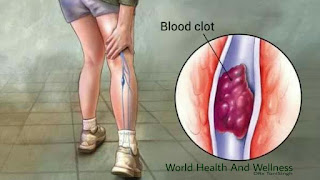सरकार ने माना- फर्जी हैं देश के 57% "डॉक्टर", 31 फीसदी 12वीं से आगे पढ़े भी नहीं 2018 में तत्कालीन स्वास्थ्य मंत्री जेपी नड्डा ने लोकसभा में कहा था कि देश में 57 फीसदी से अधिक झोलाछाप डॉक्टरों की रिपोर्ट गलत है। लेकिन, अब वही स्वास्थ्य मंत्रालय WHO की रिपोर्ट की पुष्टि कर रहा है। देश के अधिकांश एलोपैथ की प्रैक्टिस करने वाले डॉक्टर झोलाछाप हैं। यह जानकारी 6 अगस्त को प्रेस इन्फॉर्मेशन ब्यूरो के जरिए स्वास्थ्य एवं परिवार कल्याण मंत्रालय ने दी। राष्ट्रीय मेडिकल आयोग विधयेक पर पूछे जाने वाले सवालों पर स्वास्थ्य मंत्रालय ने बताया कि शहरी और ग्रामीण क्षेत्रों में काम करने वाले डॉक्टरों की उपलब्धता में काफी अंतर है। ऐसे में ग्रामीण भारत की अधिकांश आबादी झोलाछाप डॉक्टरों के चंगुल में है। देश में एलोपैथी की प्रैक्टिस करने वाले 57.3 फीसदी डॉक्टरों के पास योग्यता ही नहीं है। दरअसल, विश्व स्वास्थ्य संगठन (WHO) की 2016 की एक रिपोर्ट में बताया गया कि भारत में काम करने वाले 57.3% मेडिकल की प्रैक्टिस करने वाले डॉक्टर झोलाछाप हैं और उनके पास कोई मेडिकल से संबंधित डिग्री नहीं है। गौरतलब है क...
Posts
- Get link
- X
- Other Apps

Deep Vein Thrombosis (DVT) Deep vein thrombosis (DVT) occurs when a blood clot (thrombus) forms in one or more of the deep veins in your body, usually in your legs. Deep vein thrombosis can cause leg pain or swelling, but also can occur with no symptoms. Deep vein thrombosis can develop if you have certain medical conditions that affect how your blood clots. It can also happen if you don't move for a long time, such as after surgery or an accident, or when you're confined to bed. Deep vein thrombosis can be very serious because blood clots in your veins can break loose, travel through your bloodstream and lodge in your lungs, blocking blood flow (pulmonary embolism). Deep vein thrombosis signs and symptoms can include: - Swelling in the affected leg. Rarely, there's swelling in both legs. - Pain in your leg. The pain often starts in your calf and can feel like cramping or soreness. - Red or discolored skin on the leg. - A feeling of wa...
- Get link
- X
- Other Apps

5 Common Medical Gases Used in Hospitals Medical gas is critical to the function of hospitals and many other healthcare facilities. Knowing the most common types of gases, understanding how each is used, and then how to maintain your systems for each gas will ensure your facility's success. Bonus Content: 9 Patient Safety Challenges (and Actually How to Solve Them) as a PDF. Easily Save it to your computer or print for reference. 1. Medical Air Medical Air refers to a clean supply of compressed air used in hospitals and healthcare facilities to distribute medical gas. It is free of contamination and particles, has no oil or odors, and is dry to prevent water buildup in your facility's pipeline. When a patient is in the operating room, whether it's an emergency or not, a surgeon relies on a medical air compressor to keep the patient comfortable and breathing. Medical air sources shall be connected to the medical air distribution system only and shall be used onl...

